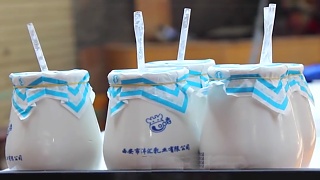50 Small Eats Dishes in China
- Dumplings (饺子, jiǎozi) - Steamed or fried dough pockets filled with meat or vegetables.
- Spring Rolls (春卷, chūn juǎn) - Crispy rolls filled with vegetables and sometimes meat.
- Scallion Pancakes (葱油饼, cōng yóu bǐng) - Flaky, savory pancakes with scallions.
- Sticky Rice Dumplings (粽子, zòngzi) - Glutinous rice wrapped in bamboo leaves, usually with fillings like meat or beans.
- Soup Dumplings (小笼包, xiǎo lóng bāo) - Steamed dumplings filled with broth and meat.
- Sichuan Spicy Wontons (红油抄手, hóng yóu chāo shǒu) - Wontons in chili oil with a spicy sauce.
- Sesame Balls (煎堆, jiān duī) - Deep-fried glutinous rice balls coated in sesame seeds.
- Fried Stinky Tofu (臭豆腐, chòu dòufu) - Fermented tofu fried until crispy.
- Guokui (锅盔, guō kuī) - Crispy, pan-fried flatbread.
- Chinese Crepes (煎饼果子, jiān bǐng guǒzi) - Thin pancakes filled with savory ingredients.
- Roujiamo (肉夹馍, ròu jiá mó) - Chinese-style hamburger with shredded meat inside a flatbread.
- Tea Eggs (茶叶蛋, chá yè dàn) - Hard-boiled eggs marinated in tea and spices.
- Fried Dough Sticks (油条, yóutiáo) - Crispy fried dough sticks, often eaten with soy milk.
- Cold Noodles (凉面, liáng miàn) - Chilled noodles served with a savory sauce.
- Congee (粥, zhōu) - Rice porridge often served with various toppings.
- Baozi (包子, bāozi) - Steamed buns filled with meat or vegetables.
- Liangpi (凉皮, liángpí) - Cold noodles made from wheat or rice flour, served with spicy sauce.
- Jianbing (煎饼, jiānbing) - Savory Chinese crepe filled with egg, crispy cracker, and sauces.
- Fried Rice Balls (炸年糕, zhà nián gāo) - Crispy fried glutinous rice balls.
- Fried Mashed Taro (芋泥, yùní) - Mashed taro fried until golden and crispy.
- Lotus Root Stuffed with Sticky Rice (藕夹, ǒu jiá) - Sticky rice stuffed into hollowed-out lotus root slices.
- Chive Pockets (韭菜盒子, jiǔcài hézi) - Pan-fried dumplings filled with chives and sometimes eggs.
- Lamb Skewers (羊肉串, yángròu chuàn) - Grilled skewers of seasoned lamb.
- Steamed Buns (馒头, mántou) - Plain steamed bread often served with dishes.
- Fried Glutinous Rice Cakes (糍粑, cíbā) - Sticky rice cakes fried until crispy.
- Stuffed Tofu (香干, xiānggān) - Tofu pockets filled with meat or vegetables.
- Fried Pork Ribs (排骨, páigǔ) - Deep-fried marinated pork ribs.
- Shengjian Bao (生煎包, shēngjiān bāo) - Pan-fried buns filled with pork and soup.
- Spicy Cold Jelly (凉粉, liáng fěn) - Cold, chewy jelly noodles in spicy sauce.
- Pan-fried Pork Buns (生煎包, shēng jiān bāo) - Pan-fried buns with juicy pork filling.
- Fried Glutinous Rice Balls (炸年糕, zhà nián gāo) - Crispy on the outside, chewy on the inside.
- Lamb Skewers (羊肉串, yángròu chuàn) - Grilled skewers of seasoned lamb.
- Green Onion Pancakes (葱油饼, cōng yóu bǐng) - Crispy pancakes flavored with green onions.
- Pork and Chive Dumplings (韭菜饺子, jiǔcài jiǎozi) - Dumplings filled with pork and chives.
- Steamed Custard Buns (流沙包, liúshā bāo) - Soft steamed buns filled with sweet custard.
- Hot and Sour Soup (酸辣汤, suān là tāng) - Spicy and tangy soup with mushrooms, tofu, and bamboo shoots.
- Steamed Shrimp Dumplings (虾饺, xiā jiǎo) - Delicate dumplings filled with shrimp and bamboo shoots.
- Spicy Chicken Wings (辣子鸡翅, làzi jī chì) - Crispy fried chicken wings tossed in spicy seasoning.
- Spicy Cold Noodles (麻辣凉面, málà liáng miàn) - Chilled noodles in a spicy, numbing sauce.
- Cucumber Salad (拍黄瓜, pāi huángguā) - Refreshing salad of sliced cucumbers with garlic and vinegar dressing.
- Cold Tofu (冷豆腐, lěng dòufu) - Chilled silken tofu served with soy sauce and toppings.
- Fried Chicken Dumplings (炸鸡饺子, zhà jī jiǎozi) - Crispy dumplings filled with seasoned chicken.
- Beef Noodle Soup (牛肉面, niúròu miàn) - Hearty soup with tender beef slices and noodles.
- Cumin Lamb (孜然羊肉, zīrán yángròu) - Spicy stir-fried lamb seasoned with cumin and other spices.
- Steamed BBQ Pork Buns (叉烧包, chāshāo bāo) - Soft steamed buns filled with sweet barbecued pork.
- Cold Sesame Noodles (凉拌麻酱面, liángbàn májiàng miàn) - Noodles tossed in a savory sesame sauce.
- Spinach and Pork Wontons (菠菜猪肉馄饨, bōcài zhūròu húntún) - Wontons filled with spinach and ground pork.
- Fried Radish Cake (萝卜糕, luóbo gāo) - Pan-fried cakes made from shredded radish and rice flour.
- Shrimp Toast (虾多士, xiā duōshì) - Crispy bread topped with shrimp paste and sesame seeds.
- Red Bean Pancakes (红豆煎饼, hóngdòu jiān bǐng) - Sweet pancakes filled with red bean paste.
- Egg and Tomato Stir-fry (西红柿炒鸡蛋, xī hóng shì chǎo jī dàn) - Simple and delicious stir-fry of tomatoes and scrambled eggs.
- Spicy Stir-fried Egg and Chili Peppers (辣炒鸡蛋, là chǎo jī dàn) - Eggs stir-fried with spicy chili peppers.
- Potato, aubergine / egg-plant, and chili peppers (地三鲜, dì sān xiān) - Stir-fried dish featuring potatoes, eggplants, and chili peppers.
Chinese cuisine is an intricate tapestry of flavors, techniques, and regional specialties that has evolved over thousands of years. From the fiery spices of Sichuan to the delicate dim sum of Cantonese cuisine, every region of China offers its own culinary delights. For visitors to China, exploring the diverse and dynamic world of Chinese food is an essential part of experiencing the country's rich cultural heritage. Here's a more extensive exploration of Chinese cuisine for visitors:
Regional Diversity:
Sichuan Cuisine: Hailing from the southwestern province of Sichuan, this cuisine is famed for its bold, spicy, and numbing flavors. Sichuan peppercorns, chili peppers, and aromatic spices are used liberally in dishes like Mapo Tofu, Dan Dan Noodles, and Sichuan Hot Pot, creating a symphony of flavors that tingles the taste buds.
Cantonese Cuisine: With its emphasis on fresh ingredients and delicate flavors, Cantonese cuisine is highly regarded for its seafood dishes, roasted meats, and dim sum. Steamed fish, Char Siu (barbecue pork), and Har Gow (shrimp dumplings) are just a few examples of the exquisite dishes that showcase Cantonese culinary mastery.
Shanghai Cuisine: Reflecting its coastal location and cosmopolitan history, Shanghai cuisine combines influences from Jiangsu, Zhejiang, and Anhui provinces. Sweet and Sour Mandarin Fish, Shanghai Soup Dumplings (Xiaolongbao), and Drunken Chicken are some of the signature dishes that highlight the diverse flavors and textures of this culinary tradition.
Beijing Cuisine: As the capital of China, Beijing boasts a rich culinary heritage deeply rooted in imperial traditions. Peking Duck, a dish with crispy skin and succulent meat served with pancakes and hoisin sauce, is a quintessential Beijing delicacy. Other notable dishes include Zhajiangmian (Beijing Noodles), Mongolian Hot Pot, and Beijing-style meat pies.
Hunan Cuisine: Known for its bold and aromatic flavors, Hunan cuisine features dishes that are spicy, sour, and intensely flavorful. Chairman Mao's Red-Braised Pork, Dong'an Chicken, and Steamed Fish Head with Chopped Chili exemplify the fiery and robust nature of Hunanese cooking, which makes ample use of chili peppers, garlic, and fermented ingredients.
Street Food and Snacks:
Jianbing: This savory Chinese crepe is a popular breakfast option, consisting of a thin pancake filled with eggs, scallions, cilantro, and various fillings such as crispy fried dough, pickled vegetables, or chili sauce.
Baozi: These steamed buns are filled with a variety of savory or sweet fillings, including pork, vegetables, or red bean paste. Baozi are a popular street food snack and can be found in teahouses, markets, and street stalls across China.
Roujiamo: Often referred to as Chinese Hamburgers, roujiamo features savory braised meat stuffed inside a flatbread, offering a hearty and flavorful snack that's perfect for on-the-go eating.
Dining Etiquette and Customs:
Family-Style Dining: Chinese meals are typically served family-style, with multiple dishes shared among diners seated around a table. It's customary to use chopsticks to pick up food from communal dishes and to serve elders before oneself.
Toasting and Ganbei: When dining with Chinese hosts, expect toasts (ganbei) with alcohol, usually baijiu (Chinese liquor). It's polite to reciprocate the toast and drink in moderation, but declining politely is acceptable if you don't drink alcohol.
Tea Culture: Tea is an integral part of Chinese dining culture, with a wide variety of teas available to complement different dishes. Green tea, oolong tea, and pu'er tea are among the most popular choices, and serving tea to guests is a sign of hospitality and respect.
Street Markets and Night Markets:
Wangfujing Snack Street, Beijing: Located near the Forbidden City, this bustling street market offers a wide variety of traditional snacks, street food, and local delicacies. Visitors can sample everything from scorpions on a stick to traditional Beijing snacks like Jianbing and Tanghulu (candied fruit skewers).
Shanghai Old Street, Shanghai: Nestled in the heart of the city's historic district, Shanghai Old Street is a bustling marketplace where visitors can explore narrow alleyways lined with traditional shops, street vendors, and food stalls. From steamed dumplings and stinky tofu to hand-pulled noodles and sugar-coated haws, there's something to satisfy every craving.
Dietary Considerations:
Vegetarian and Vegan Options: While Chinese cuisine traditionally features a wide range of meats and animal products, vegetarian and vegan options are becoming increasingly available, especially in larger cities and tourist destinations. Buddhist restaurants (????, s�sh� c?nt?ng) often offer meat-free versions of classic dishes, and plant-based ingredients like tofu, mushrooms, and seasonal vegetables are widely used in Chinese cooking.
Exploring the diverse and delicious world of Chinese cuisine is an essential part of any visit to China. From regional specialties and street food snacks to dining etiquette and cultural customs, the culinary landscape of China offers a rich tapestry of flavors, traditions, and experiences that are sure to delight and inspire visitors from around the world. Bon app�tit!.
 50 ‘Small Eats’ 小吃 (Xiǎo Chī) dishes
50 ‘Small Eats’ 小吃 (Xiǎo Chī) dishes














